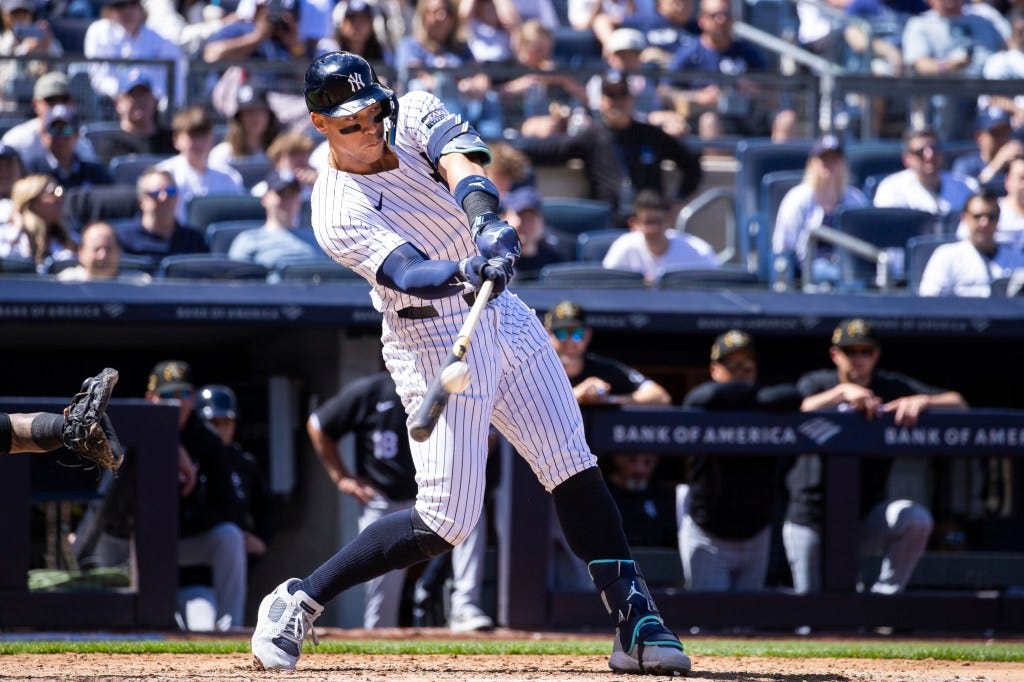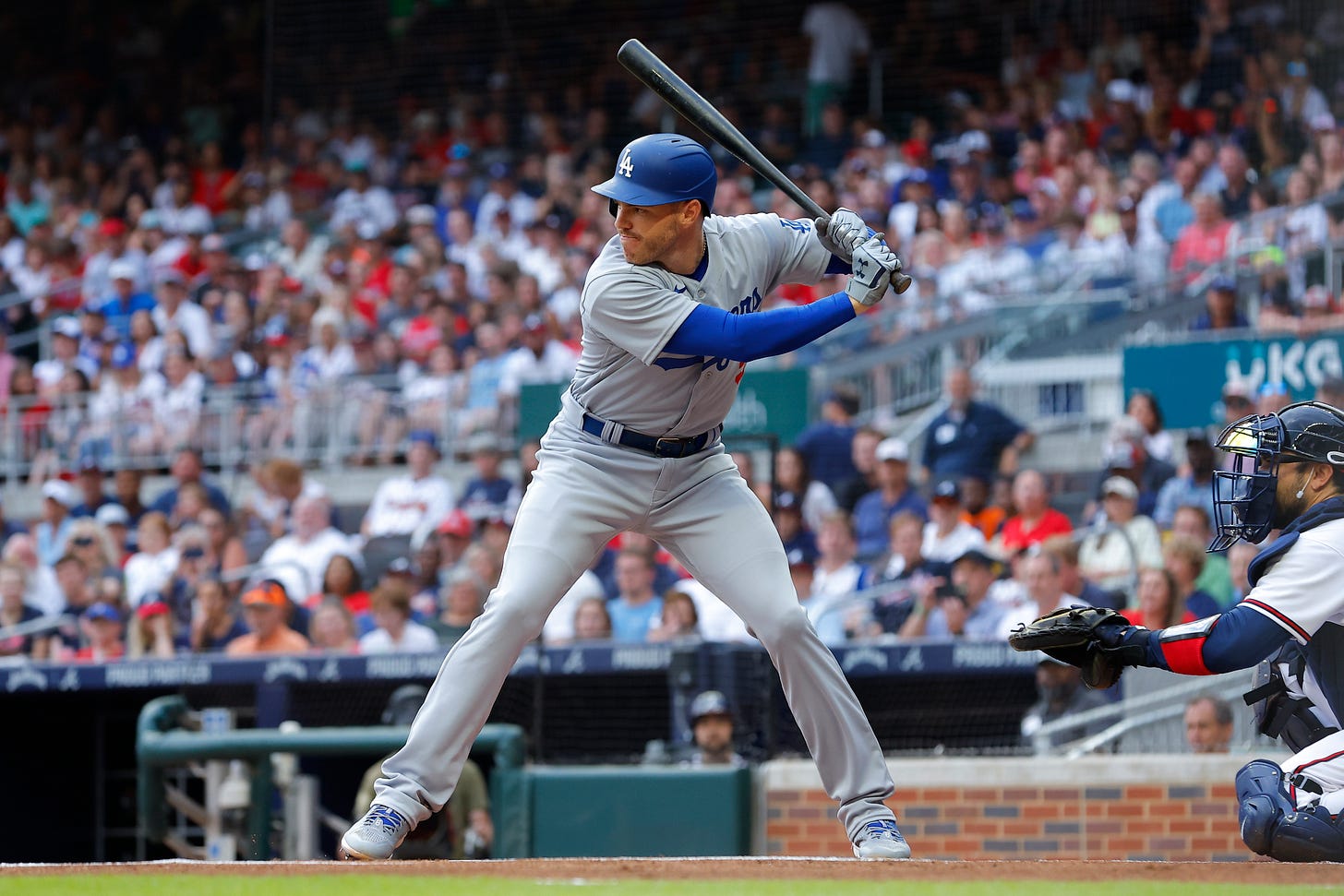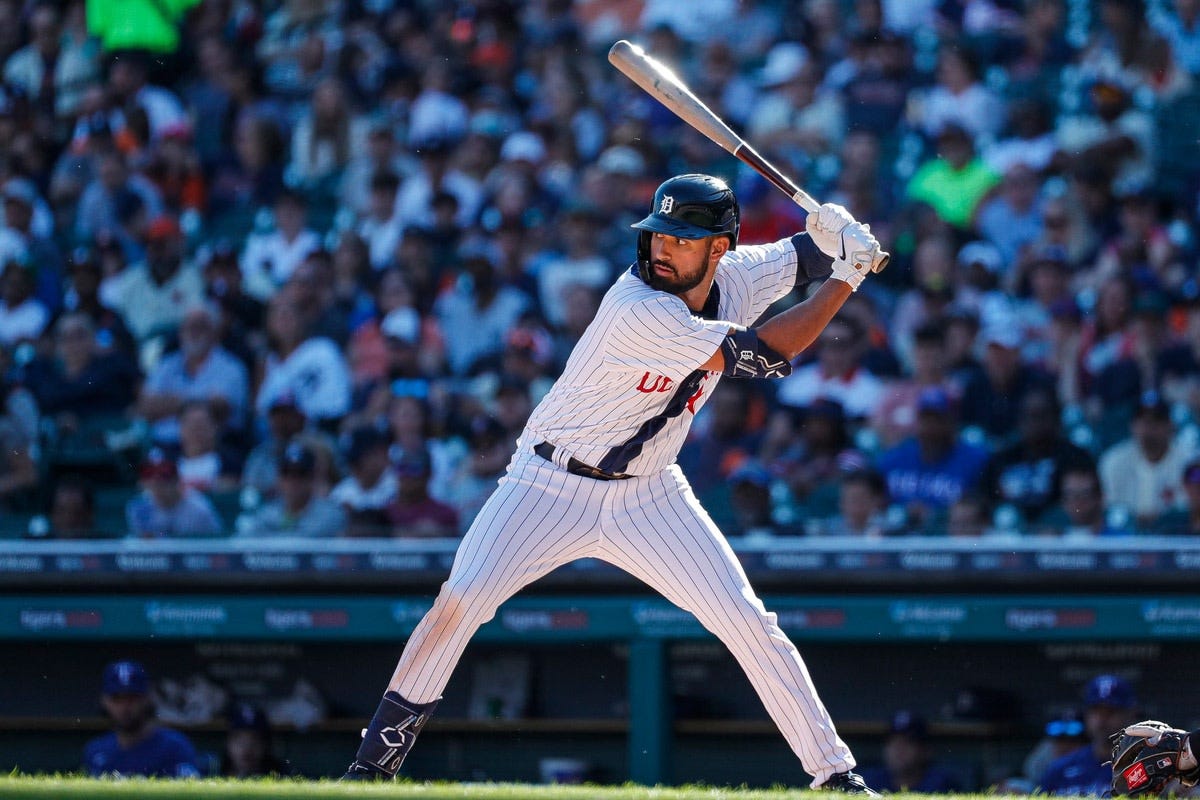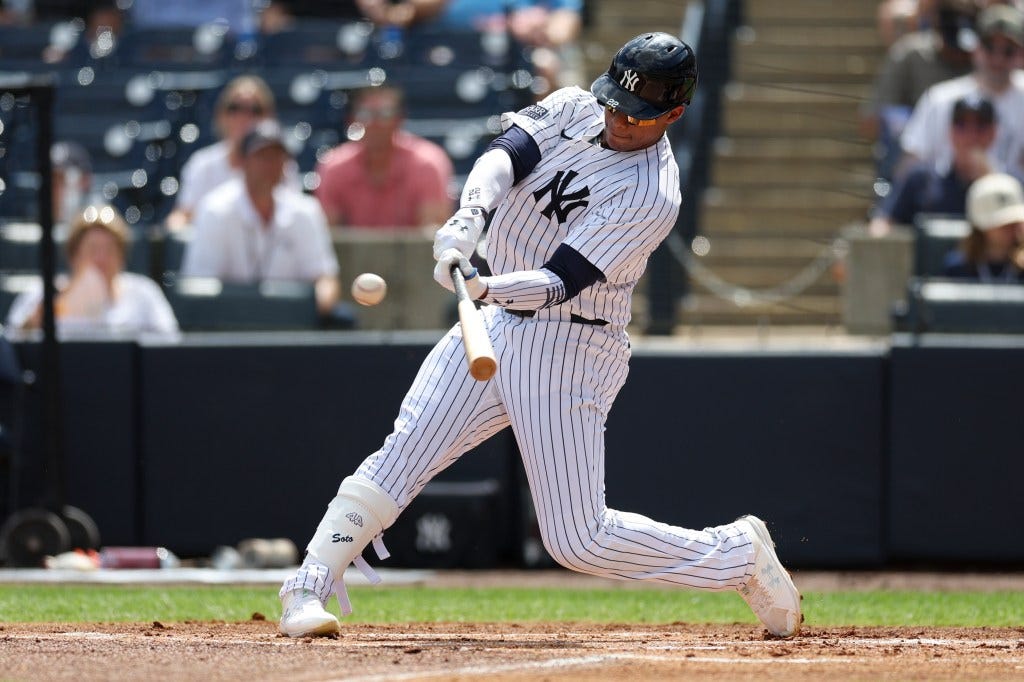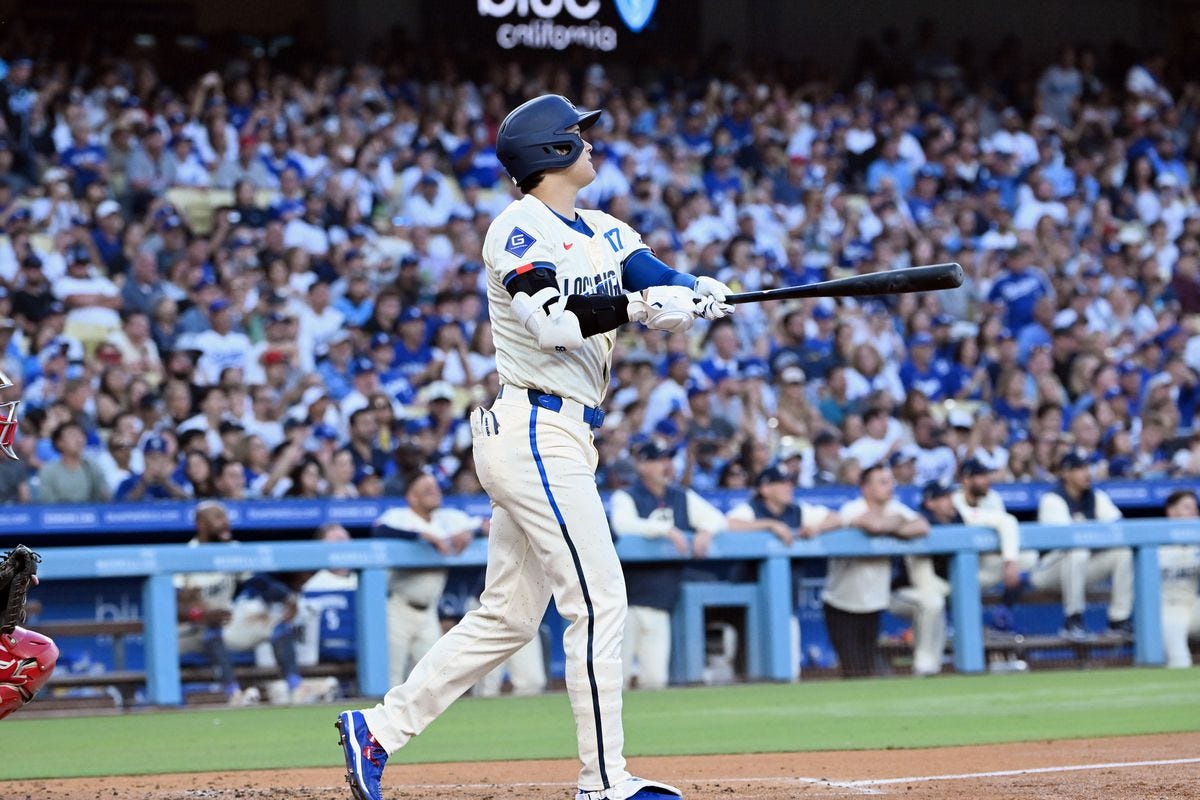Exploring Key Metrics and Methodology for Analyzing Offensive Performance - An Update
How to evaluate offensive players using advanced metrics.
Just over a year ago, I wrote a piece on my Medium blog titled Exploring Key Metrics and Methodology for Analyzing Offensive Performance. The goal of the article was to both explain my process for evaluating hitters, as well as to organize my own thoughts in order to improve my evaluation process. I decided it would be beneficial to create an updated version of this article in order to document how my evaluation process has evolved over the past year. Some of this article will be copied and pasted from the original, however, I have made some important updates in areas such as bat tracking and swing decision modeling which have made significant advancements over the past year.
Evaluating a hitter’s offensive performance can be one of the most comprehensive forms of baseball analysis, as multiple facets of a hitter’s approach such as plate discipline, batted-ball quality, and luck factors all need to be analyzed to fully understand how a hitter’s offensive production is created. Analyzing offensive player’s performance took a big leap once Statcast data was released to the general public, and projects to undergo another evolution over the coming years once the public sphere grasps a better understanding of the newly unveiled bat tracking data, demonstrating the ever-changing nature of baseball analytics and the need to constantly adapt in order to effectively evaluate hitters. In this article, I break down my process for evaluating offensive players, explain how I utilize (publically available) advanced metrics, and discuss how my process of analyzing hitters has changed over the past year.
Descriptive Metrics:
In my opinion, Weighted Runs Created Plus (wRC+) is the most powerful, all-encompassing metric for evaluating offensive players. As described by FanGraphs, “Weighted Runs Created Plus (wRC+) is a rate statistic which attempts to credit a hitter for the value of each outcome (single, double, etc.) rather than treating all hits or times on base equally, while also controlling for park effects and the current run environment.” wRC+ is typically the first offensive metric I look at while evaluating a Major League player because it is the best statistic at evaluating a player’s total offensive production, due to the statistic’s strong correlation with runs scored.
While wRC+ provides great insight into how well an offensive player is performing, there are other metrics available that better describe why an offensive player is performing at a certain level. Two statistics I use to determine whether or not a player is experiencing “batted ball luck”, are xwOBA (Expected Weighted On-Base Average) and BABIP (Batting Average on Balls in Play).
BABIP (Batting Average on Balls in Play) was one of the first sabermetrics created to identify whether or not a batter was experiencing “batted ball luck” and producing a higher/lower batting average than expected. Similar to the mathematical concept of regression to the mean, the league average for BABIP remains at or around .300 each season. Therefore, it is assumed that an individual player’s BABIP will stabilize at .300 over the course of a full season. If a player’s BABIP is at .450 for example, it can be expected that the player’s batting average will sharply decline over the remainder of the season as the BABIP regresses to the league average. However, there are some flaws to BABIP, as some players do not consistently average a .300 BABIP. Players that hit a lot of line drives, such as Freddie Freeman, or have high sprint speeds, such as Trea Turner, tend to have BABIP’s above league average; while players that hit an excessive amount of fly balls tend to have BABIP’s below league-average.
xwOBA (Expected Weighted On-Base Average) attempts to remove the subjectivity of interpreting BABIP when it comes to evaluating the “luck factor” of offensive players. xwOBA is formulated by using exit velocity, launch angle, and sprint speed in order to predict a hitter’s wOBA (Weighted On-Base Average). Similar to wRC+, wOBA is “a rate statistic which attempts to credit a hitter for the value of each outcome (single, double, etc.) rather than treating all hits or times on base equally”, as described by FanGraphs. If a player’s xwOBA is higher than their wOBA, it can be assumed that the hitter is experiencing “batted ball luck”, while if a player’s xwOBA is lower than their wOBA, then it can be assumed that the hitter has been “unlucky”.
While it appears on the surface that comparing xwOBA to wOBA as opposed to evaluating BABIP might be more effective at identifying “batted ball luck” (due to the apparent removal of subjectivity in the analysis compared to BABIP), there are a couple of shortcomings to xwOBA which make this comparison a bit more nuanced. First, xwOBA was designed to be a descriptive metric within a given season. Using xwOBA to evaluate a player's “batted ball luck” would make the assumption that their batted ball quality will remain consistent throughout the entirety of the season, which is not always the case. Second, xwOBA (for reasons described by Tom Tango) does not include spray angle in its calculation. This causes players that frequently pull fly balls (such as Isaac Parades, Wilmer Flores, and Marcus Semien) to be consistently undervalued by xwOBA as the statistic does not take into account the different levels of exit velocity required to create offensive production at various spray angles.
For these reasons, I believe it is important to use both xwOBA/wOBA and BABIP in tandem when it pertains to evaluating “batted ball luck”. Being able to understand the shortcomings and limitations of each metric which can allow for hitters to over/underperform their expected production is a critical step in evaluating offensive performance.
Predictive Metrics:
With the advent of the Statcast era in 2015, the public now has access to data such as Barrel%, Hard Hit%, and Exit Velocity, which serve as predictive metrics in order to determine an offensive player’s potential. Maximum Exit Velocity is one of the most important and most discussed predictive metrics for hitters. Simply put, I view Maximum Exit Velocity as a means to measure a player’s power potential. If a player has a high Max. EV, then they have greater potential to hit for power than a player with a low Max. EV.
By looking at the Statcast leaderboards on Baseball Savant, it is easy to see a correlation between Max. EV and total offensive production. Hitting the ball hard typically produces better results! If a player has a high Max. EV and low power numbers, it is usually an indicator that the player needs to make an adjustment regarding where they are hitting the ball. Typically, this means the player is hitting a lot of ground balls or tends to not pull the ball a lot.
While some may argue that Max. EV doesn’t matter if a batter hits a very hard ground ball, I disagree with this viewpoint for two reasons. First, I would prefer that a batter hit a hard-hit ball on the ground as opposed to a soft-hit ground ball, as the hard-hit ball has a much better chance of turning into a base hit. Second, for the reasons mentioned earlier, if a player hits a lot of hard ground balls, it is an indicator that they can hit for power if they are able to lift the ball more often. One example of this is Riley Greene of the Detroit Tigers, who has increased his fly ball rate from 24.8% to 35.2% this season, which increased his isolated power so far this season, allowing him to live up to the power potential that his career Max. EV of 114.4 MPH suggested he had.
Launch Angle is one of the most misunderstood Statcast metrics by the general public, and while it has numerous effective uses, the metric can often be misutilized. One general misconception about Launch Angle is that hitters should always attempt to make contact at a specific high angle, which will in turn guarantee offensive success due to the amount of home runs a batter will hit. By looking at the Statcast leaderboards on Baseball Savant, it is easy to see that there is little to no correlation between Average Launch Angle and total offensive production. In other words, Maximum Exit Velocity is much more predictive of offensive production than Average Launch Angle. This is largely because different launch angles are ideal for different parts of the zone (ex. a “smaller” launch angle is ideal for a pitch at the top of the zone), and recent research indicates that pitchers have a large amount of control over a hitter’s launch angle. Yes, do not get me wrong, it is very very good for a hitter to hit the ball in the air (and even better if they can consistently pull the ball in the air), however, I place more focus in analyzing a hitter’s approach as opposed to “chasing” a specific average Launch Angle when I attempt to analyze an offensive player who can tap into more of their power potential.
Barrel Rate and Hard Hit Rate are two more metrics that have been created in the Statcast era, which I use to analyze offensive players. As defined by Statcast, a “Hard Hit” is a ball that is hit at an exit velocity of 95 mph or higher, and a “Barrel” is a “batted ball event whose comparable hit types (in terms of exit velocity and launch angle) have led to a minimum .500 batting average and 1.500 slugging percentage since Statcast was implemented Major League wide in 2015.” In simpler terms, “to be Barreled, a batted ball requires an exit velocity of at least 98 MPH. At that speed, balls struck with a launch angle between 26-30 degrees always garner Barreled classification. For every MPH over 98, the range of launch angles expands.”
Last season, I wrote a piece titled Examining the Future of Hitting: Bat Speed, Swing Path, and Biomechanics where I discussed how the availability of bat tracking data could be used to create better predictive metrics for offensive players and provide savvy organizations with a potential competitive advantage. This past May, Statcast released the first batch of bat tracking metrics (such as bat speed and swing length) to the public, which has allowed many analysts to begin creating new tools for analyzing offensive performance. Given the fact that only three months of data is publicly available, I have avoided making too many conclusions about the new data and metrics as their year-to-year stickiness and predictive ability have yet to be tested, however, there have been a few promising developments over the past month that provide a roadmap to how we will evaluate hitters in the future.
As demonstrated in my bat speed research last season, there is a statistically significant relationship between bat speed and exit velocity. Swing the bat faster -> hit the ball harder -> generate offensive production. I used to believe that a hitter’s ability to hit the ball hard was “set in stone” and not likely to change over the course of their career. With the introduction of bat speed data, as well as the advent of training methods such as weighted bat training, this notion no longer holds true and I expect many hitters over the next couple of years will attempt to gain bat speed in order to hit the ball harder and improve their offensive production, similar to how pitchers have been training for velocity in recent years.
I am personally intrigued by the new swing acceleration (which values quick, short swings) and collision efficiency metrics (such as Statcast’s Blast%), and I am looking forward to evaluating the predictive abilities of these metrics once a larger dataset of bat tracking data is available to the public. Rumor has it that additional metrics such as contact point and attack angle will be released to the public later in the summer, and this will be a valuable addition to bat tracking analysis since these variables have an impact on the bat speed and swing length of a given swing (example: pulling the ball in the air requires a contact point further away from the hitter, which causes a longer swing length). There is a lot of potential in the future of predictive metrics for offensive players, and it will be interesting to see if any of the new bat tracking related predictive metrics rival the effectiveness of the predictive metrics that have been created for analyzing pitchers over the past few seasons.
Plate Discipline Metrics:
Having good plate discipline is a skill I look for in offensive players for a variety of reasons. One, swinging at “good” pitches and not swinging at “bad” pitches often results in higher-quality contact. Two, having the ability to walk at a high rate not only adds to a player’s total offensive production but also provides the hitter with a “safety net” to fall back on during a slump, as they are still able to consistently get on-base.
There are a few methods I use for evaluating plate discipline. One method I use is simply analyzing the player’s Walk Rate. Since a player obviously needs to take 4 pitches out of the zone to draw a walk, a high Walk Rate is a clear indicator that a hitter has good plate discipline. Even better, if a player has a high Walk Rate along with a low Strikeout Rate, then I would consider that player to have elite plate discipline. I frequently use Walk and Strikeout Rates to analyze Minor League prospects, as these metrics are usually quite “sticky” from level to level. While some regression can be expected between levels (I would not expect a player to strikeout less in MLB than they did in AA, for example), if a player displays high Walk Rates and low Strikeout Rates in the Minors, it is typically an indicator that the player has good plate discipline and will experience Major League success. On the other hand, if a prospect has a high Strikeout Rate at a level like A-ball, they likely have too much swing-and-miss to become an average Major League hitter.
Another method of measuring a hitter’s plate discipline is by analyzing their O-Swing%, which measures how often a player swings at pitches outside of the strike zone. O-Swing% can be a better measure of plate discipline than simply looking at a hitter’s Walk Rate because this metric takes into account all swing decisions, as opposed to Walk/Strikeout Rate which only takes into account the swing decision made on the last pitch of a given plate appearance.
Over the past year, swing decision models have attempted to take this analysis one step further by properly weighing the value of a swing vs. a take to better evaluate a hitter’s plate discipline. Two notable models that I have referred to often are Drew Haugen’s SwRV+, and Robert Orr’s SEAGER. Swing decision models are an important next step in evaluating plate discipline because swings and takes have different values in different counts. A “bad” swing on a 3-2 count should be penalized more than a “bad” swing on a 2-0 count, and a swing decision on a pitch down the heart of the plate should be weighed differently than a pitch located on the edge of the strike zone. Both models attempt to accomplish this task within their individual frameworks.
A player’s plate discipline is another skill that is widely thought to be “set in stone”, and given the trend of these notions being disproven in recent years, I believe there is a competitive advantage to be had if an organization develops a way to effectively improve a hitter’s swing decisions. Perhaps this could be achieved by using virtual reality training or a hyper-realistic pitching machine such as a Trajekt. Hitting is reactive and changing swing decision tendencies involves the difficult task of changing reactive habits that have been established over many years, but I think there is a lot of value to be gained if an organization can create a method to develop this skill effectively given the significant role the quality of a hitter’s swing decisions play in determining a player’s offensive ceiling.
Concluding Thoughts:
With help from advanced metrics, baseball analysts now have more tools at their disposal than ever to both accurately evaluate hitters, and to identify how a hitter can improve their offensive approach in order to reach their full potential. Descriptive metrics such as wRC+, wOBA/xwOBA, and BABIP adjust a player’s offensive production relative for their environment, and attempt to quantify how much “luck” a hitter is encountering; while predictive metrics such as Barrel Rate and Hard-Hit Rate use Statcast technology in order to better project a player’s future offensive production. Advancements in bat tracking and swing decision modeling projects to have a significant impact on how analysts evaluate offensive production in the future. While scouting a player in person is still a very critical element of the player evaluation process, the usage of both descriptive and predictive metrics can help “paint a better picture” when determining how much offensive production a player produces, and aids heavily in forecasting a player’s potential future value.
Thanks for reading!
Follow @MLBDailyStats_ on X and Adam Salorio on Substack for more in-depth MLB analysis. Photo credits to New York Post, Getty Images, and USA Today.


